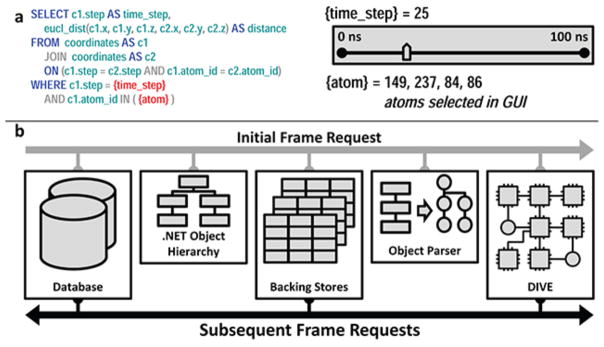Figure 3.

The two SQL streaming paradigms available in DIVE. (a) Interactive SQL. On the left is a SQL template containing tags for ‘time_step’ and ‘atom’. The tags are replaced by input from GUI elements, and the final query calculates the distances between all user selected atoms at the specified time. (b) Pass-through SQL. On the initial frame request, a datanode hierarchy is constructed around the .NET objects and then backing stores are created. On all subsequent frame requests, DIVE buffers SQL data directly into the backing stores using multiple threads. Large amounts of complex data are then propagated through DIVE at interactive speeds by bypassing OO parsing.
